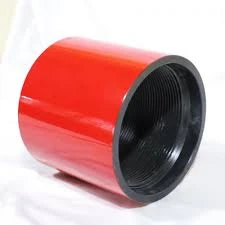- Afrikaans
- Albanian
- Amharic
- Arabic
- Armenian
- Azerbaijani
- Basque
- Belarusian
- Bengali
- Bosnian
- Bulgarian
- Catalan
- Cebuano
- Corsican
- Croatian
- Czech
- Danish
- Dutch
- English
- Esperanto
- Estonian
- Finnish
- French
- Frisian
- Galician
- Georgian
- German
- Greek
- Gujarati
- Haitian Creole
- hausa
- hawaiian
- Hebrew
- Hindi
- Miao
- Hungarian
- Icelandic
- igbo
- Indonesian
- irish
- Italian
- Japanese
- Javanese
- Kannada
- kazakh
- Khmer
- Rwandese
- Korean
- Kurdish
- Kyrgyz
- Lao
- Latin
- Latvian
- Lithuanian
- Luxembourgish
- Macedonian
- Malgashi
- Malay
- Malayalam
- Maltese
- Maori
- Marathi
- Mongolian
- Myanmar
- Nepali
- Norwegian
- Norwegian
- Occitan
- Pashto
- Persian
- Polish
- Portuguese
- Punjabi
- Romanian
- Russian
- Samoan
- Scottish Gaelic
- Serbian
- Sesotho
- Shona
- Sindhi
- Sinhala
- Slovak
- Slovenian
- Somali
- Spanish
- Sundanese
- Swahili
- Swedish
- Tagalog
- Tajik
- Tamil
- Tatar
- Telugu
- Thai
- Turkish
- Turkmen
- Ukrainian
- Urdu
- Uighur
- Uzbek
- Vietnamese
- Welsh
- Bantu
- Yiddish
- Yoruba
- Zulu
Understanding Tubing Crossovers for Enhanced Oil and Gas Exploration Techniques
Understanding Tubing Crossover A Crucial Element in Oil and Gas Operations
In the oil and gas industry, the efficient operation of drilling and production processes is paramount to maximizing output and minimizing costs. One critical component in this framework is the tubing crossover, a specialized tool that plays a vital role in various operations, from drilling to completion.
What is a Tubing Crossover?
A tubing crossover is a type of connector used in well completion and workover operations to join different sizes or types of tubing. It facilitates the flow of fluids and gases in different sections of the wellbore, and its design allows for easy transition from one diameter to another. Typically, the crossover is made of high-strength materials, as it must withstand extreme pressures and corrosive environments prevalent in oil and gas wells.
The Importance of Tubing Crossovers
1. Versatility in Operations Tubing crossovers are designed to accommodate various tubing sizes and specifications, making them an essential accessory during drilling and production. Their ability to connect both larger and smaller tubing ensures adaptability in well conditions, which can vary significantly depending on geological factors.
2. Pressure Management Maintaining wellbore stability is crucial for operational safety and efficiency. Tubing crossovers help manage internal pressures by enabling better fluid flow control. This is particularly important in operations involving high-pressure zones, where improper management can lead to blowouts or other hazardous situations.
3. Ease of Installation and Maintenance The design of tubing crossovers allows for quick installation and changes during operations, which minimizes downtime and reduces associated costs. In an industry where time is money, the ability to swiftly change or replace components is invaluable.
4. Enhanced Safety Features Modern tubing crossovers often come equipped with safety features such as pressure-relief valves, which help to prevent the uncontrolled release of wellbore fluids. These features are critical in maintaining safe operating conditions and protecting workers and equipment.
Types of Tubing Crossovers
tubing crossover

Tubing crossovers come in various designs and sizes to meet specific operational needs. Some common types include
- Standard Crossovers Typically used for basic applications, these are designed to connect tubing of similar dimensions. - Reducing Crossovers Used when transitioning from a larger diameter tubing to a smaller one, this type is essential in high-flow scenarios where managing fluid dynamics is vital.
- Flanged Crossovers Incorporating flanges allows for easy attachment to other components, providing a more stable connection.
- Rotary Crossovers These are specialized for drilling applications, allowing drill pipe connections to be made without having to remove the entire assembly from the wellbore.
Innovations in Tubing Crossover Technology
As the oil and gas industry evolves, so do the technologies used in drilling and completion. Recent innovations have led to the development of smart tubing crossovers equipped with sensors that monitor pressure, temperature, and fluid flow in real-time. This data can be invaluable for operators, allowing for immediate adjustments and enhancing overall efficiency.
Moreover, advancements in materials science have introduced lighter yet stronger materials for tubing crossovers. This not only reduces the weight of drilling assemblies but also enhances endurance against corrosive downhole environments.
Conclusion
In summary, tubing crossovers play an indispensable role in the efficiency and safety of oil and gas operations. Their versatility, coupled with modern technological advancements, ensures that they can accommodate the evolving demands of the industry. As operators continue to seek ways to maximize output while maintaining safety, the tubing crossover stands out as a critical component that bridges various aspects of drilling and production. Understanding its importance can lead to better planning and execution in oil and gas operations, ultimately driving improved performance and profitability.
-
Well Casing Extension Couplings – Applications and InstallationNewsJun.06,2025
-
Types of Crossover Subs in Drilling & CompletionNewsJun.06,2025
-
Key Features of High-Quality Tubing Pup JointsNewsJun.06,2025
-
Installation and Maintenance Tips for Steel Couplings for PipeNewsJun.06,2025
-
How to Select the Right Pup Joint for Oil & Gas OperationsNewsJun.06,2025
-
Applications of Stainless Steel Pipe CouplingsNewsJun.06,2025







